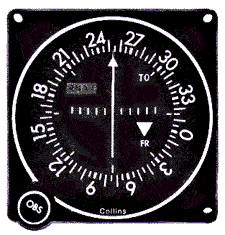Do you still remember what VOR stands for? What about the service limits? How about how to prevent reverse sensing? Anything familiar? If no is your answer, then this article feels timely and directed to you. Here’s what you need to know about VOR.
What Does VOR stand for?
The VHF omnidirectional Radio Range or VOR is an aircraft navigation system that functions to operate in the VHF band. VORs are the most common ground-based navigational aid.
They are actually older than GPS, and they were used in the 1960s when GPS had not been invented. Since then, they have been a common source of navigation information and an excellent navigational aid for pilots without GPS services.

VOR allows you to fly from point to point along established airways. It can be used for both general and commercial aviation. While the FAA is slowly phasing out some VORs, there are still many VOR stations across the country.
VORs offer valuable sources of position information that you require in instrument approach procedure, cross country flights, and prevent you from getting lost. In simple terms, they help you pinpoint your position or location.
This type of short-range radio navigation system comes with a receiving unit that the aircraft will use to determine its location and stay on course.
The VOR sends radio signals that are transmitted by a network of various ground radio beacons. The Very High frequency band or VHF range from 108.00 to 117.95MHZ.
The VOR ground station makes use of a phased array of the antenna to send quality directional signals that rotate horizontally in a clockwise direction 30 times a second.
It is also responsible for sending 30HZ reference signals on subcarriers timed to be in phase with directional antenna since the latter passes magnetic north.
This kind of signal is the same in all directions. The phase difference, however, between the signal amplitude and the reference signal is the bearing from the VOR station to its receiver relative to the magnetic north.
This position line is commonly known as the “radial”. The intersection of radials from the different VOR stations can be used to position the aircraft like in the Radio Direction Finding (RDF) system.
History of VOR
Invented in the United States in 1937 and deployed in 1946, VOR was necessary for airplanes as it was found to be a convenient standard navigational system across the world.
Before then, planes used to rely on visual Aural Radio Range (VAR), which was pretty decent and reliable at the time. When VOR came into the picture, it offered better services and quickly replaced VAR in the aviation industry.

The VOR was uniquely designed to offer 360 courses to and from the station–based on pilot selection. By the 1950s, vacuum tube type of transmitters with rotating antennas were installed but started being replaced with fully state units from the early 1960s.
From there, they became the most widely used radio navigation systems in the 1960s. They also took over from the old radio beacons the frequency systems of that time.
With VOR, an aircraft has the ability to follow a specific path from one station to the other by tuning on to successive stations on the VOR receiver, where the pilot will choose either to follow the course on the radio magnetic indicator or set in a horizontal situation or course deviation indicator.
From 2005, the VOR started getting replaced with GPS due to various advances in technology. However, since the data update costs and receiver are quite significant, many small general aviation aircrafts have not been equipped with GPS and continue to use the VOR, and NDB approaches.
Components and features
VOR is more reliable and offers greater accuracy compared to the NDBs due to various factors. One crucial factor is that VOR offers a bearing from aircraft to the station, which is not altered by aircraft orientation or the wind.
The system is made up of a receiver component and a ground component. Ground stations provide pilots with guidance both en route and during departures and arrivals.
Antenna and VHF
The antenna, VHF radio, and cockpit instrument are necessary aircraft equipment. The type of instrument varies but will consist of one of the following
- Horizontal Situation Indicator (HSI)
- Omni-Bearing Indicator (OBI)
- Radio Magnetic Indicator (RMI)
… or a combination of any of two of the three kinds.
Distance Measuring Equipment (DME)
The distance measuring equipment (DME) gives the pilot a precise indication of the plane’s distance from the VOR station. VOR also has their own Morse code that broadcasts to pilots.
It also has an AM voice broadcast ability. This ensures that pilots navigate from the right VOR station as there are many VOR facilities in close range with an aircraft.
The VHF radio is not vulnerable to diffraction or course bending around coastlines and terrain features. As a result, phase encoding is made more accessible, and there is less interference from thunderstorms.

VOR signals provide a predictable accuracy from a VOR beacon compared to the precision offered by the augmented GPS. The stations heavily depend on ‘a line of sight’ because they operate under the VHF band.
That means that if a transmitting antenna is not visible on a perfectly clear day from the receiving antenna, an essential and useful signal can still be received.
That also means that the VOR is limited to the horizon, or closer with the intervention of mountains.
While the modern solid-state transmitting equipment will require less maintenance than other older units, there is a need for an extensive network of stations to give reasonable coverage on the major air routes.
How VOR works
The frequency range for VOR typically ranges between 108.0MHZ and 117.95MHZ. Each VOR is oriented to magnetic north and releases 360 radials from the station.
The VOR sends one rotating variable signal and one stationary master signal. The VOR aircraft’s antenna that is usually located at the tail picks the signal and transmits it to the receiver in the cockpit.
The VOR receiver in the aircraft compares the difference between the reference phase and the VOR’s variable to determine the aircraft’s bearing.
Most VORs come with tactical air navigation equipment or distance measuring equipment installed within the station. When collocated with the DME, it becomes VOR DME, and when Collocated with a TACAN, it is labeled as VORTAC.
You can find them chartered on various IFR low charts, VFR sectional charts, SIDs, IFR high charts, instrument approaches, and STARs. The majority of VORs consist of DME, and with this kind of VORs, you are able to determine how far you are from the station using the display readout at your cockpit.
Related Posts














